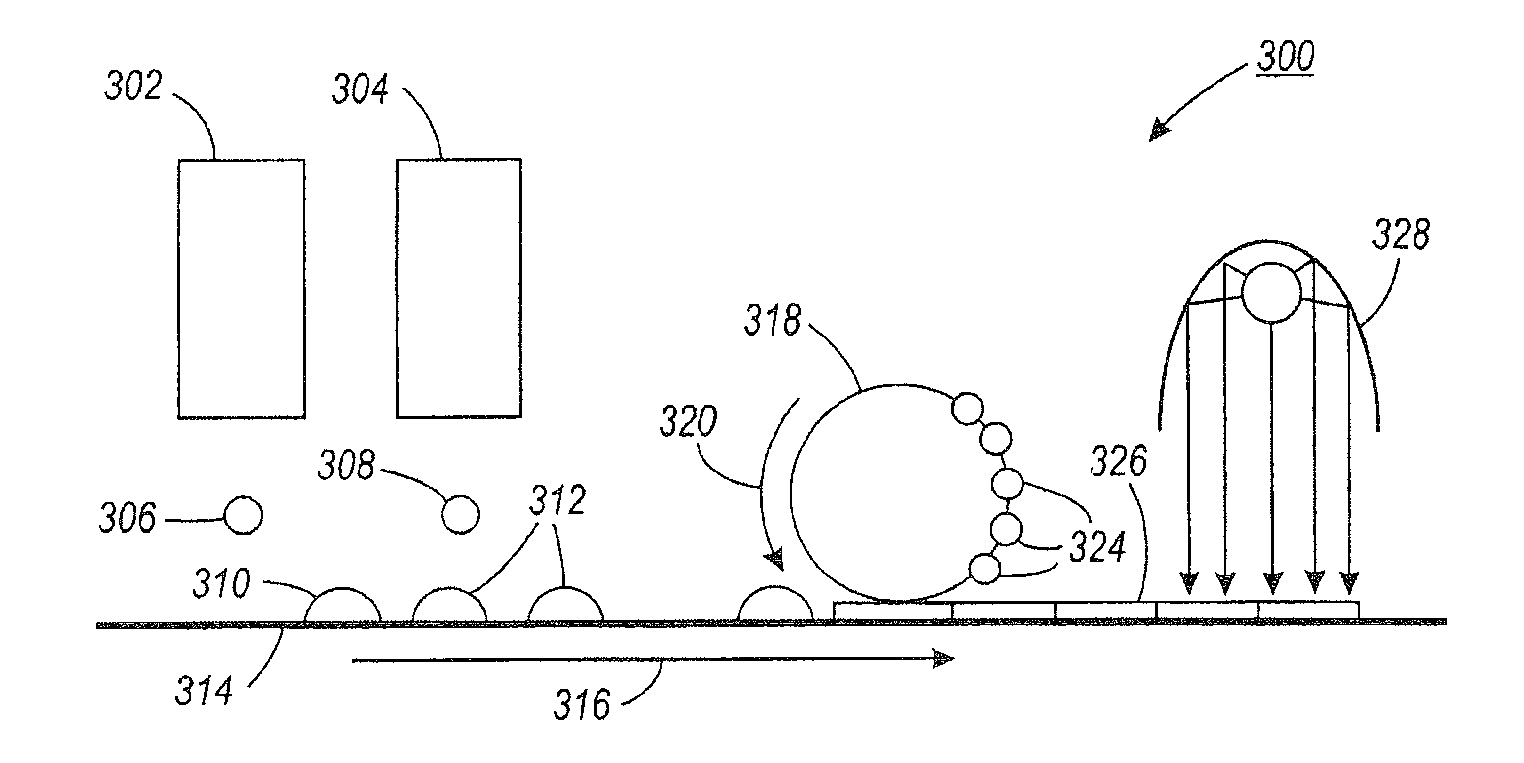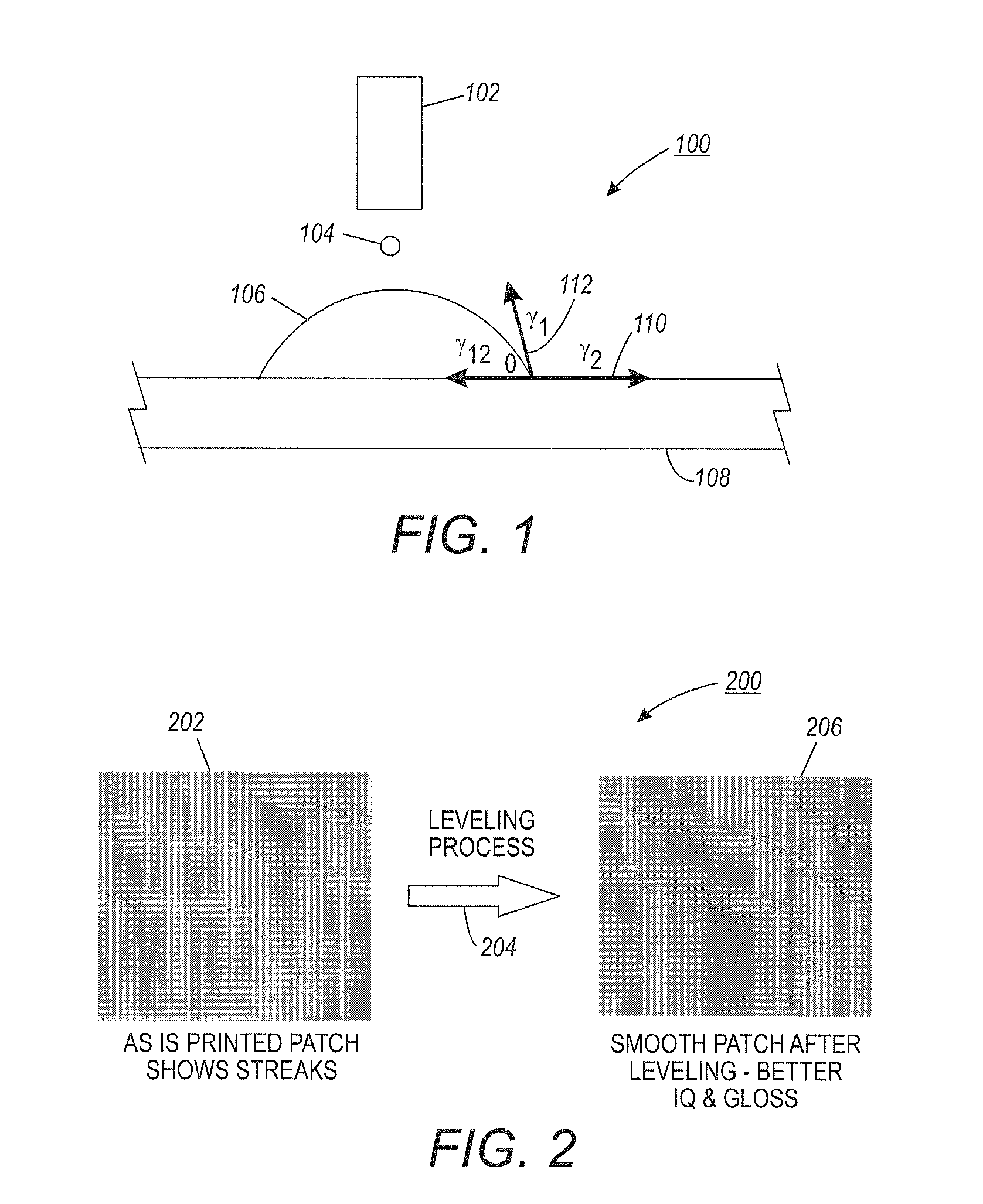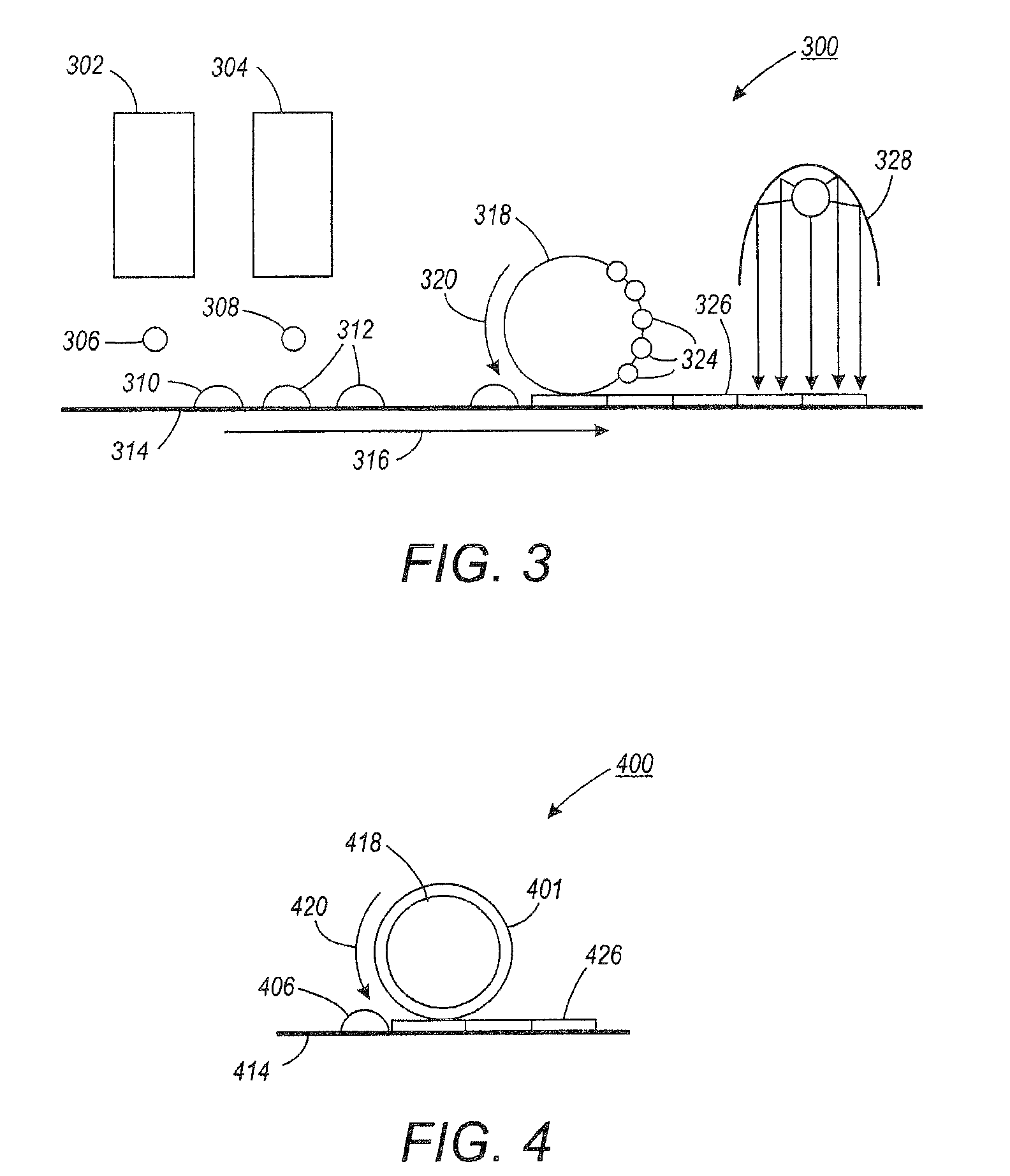Contact leveling using low surface tension aqueous solutions
a technology of low surface tension and aqueous solutions, applied in the field of release layers, can solve the problems of undesirable solvent based systems, microbanding, and unsuitability for many printing applications without some sort of transformation or curing, and unfortunately has also been observed to exhibit microbanding
- Summary
- Abstract
- Description
- Claims
- Application Information
AI Technical Summary
Benefits of technology
Problems solved by technology
Method used
Image
Examples
examples
[0122]This disclosure will be illustrated further in the following Example.
[0123]A testing fixture 500 as shown in FIG. 5 was prepared to evaluate UV gel ink offset to the image conditioning surface. The tool (testing fixture) 500 consisted of two motor-driven, fixed distance soft silicone rollers 502, 504 (motor not shown). The roll speed was capable of being controlled to a speed of between 10 to 100 inches / sec. Test leveling surface 506 comprised of stainless steel sheet was fixed on the top roller 502 to simulate a leveling surface. An aqueous release layer solution (1.5% sodium dodecylbenzene sulphonate in water) was applied to the stainless steel leveling surface by soaking a cloth with the solution, and wiping the surface with the soaked cloth.
[0124]An approximately 12 micron thick cyan colored UV gel ink patch 508 was printed on an inkjet transparency 510, and a piece of transparency having the ink patch was then attached to an A3 size paper sheet 512. This A3 size paper she...
PUM
 Login to View More
Login to View More Abstract
Description
Claims
Application Information
 Login to View More
Login to View More - Generate Ideas
- Intellectual Property
- Life Sciences
- Materials
- Tech Scout
- Unparalleled Data Quality
- Higher Quality Content
- 60% Fewer Hallucinations
Browse by: Latest US Patents, China's latest patents, Technical Efficacy Thesaurus, Application Domain, Technology Topic, Popular Technical Reports.
© 2025 PatSnap. All rights reserved.Legal|Privacy policy|Modern Slavery Act Transparency Statement|Sitemap|About US| Contact US: help@patsnap.com



